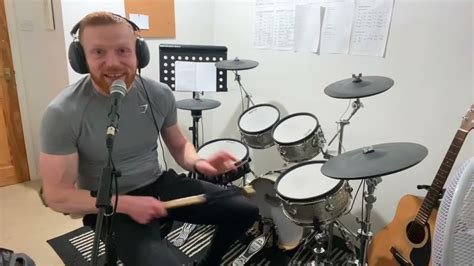Beat the Creep: Bass Drum Mastery for Everyone
The bass drum. The heartbeat of any song. It's the foundation upon which melodies and rhythms are built. But getting that bass drum sound just right can feel like an elusive quest. Many drummers struggle with a common problem: the dreaded "bass drum creep." This refers to that slightly off-time, muddy, or undefined bass drum sound that drags the entire track down. This comprehensive guide will equip you with the techniques and knowledge to conquer bass drum creep and achieve mastery, no matter your skill level.
Understanding Bass Drum Creep: What Causes It?
Before we dive into solutions, let's understand the root causes of that frustrating bass drum creep. Several factors can contribute:
-
Timing Issues: This is often the primary culprit. Even a slightly inconsistent foot tempo can create a noticeable dragging effect. Improper foot technique and a lack of consistent practice can amplify this.
-
Tuning and Placement: A poorly tuned bass drum can sound muddy and undefined, leading to a sense of creep. Similarly, its placement in relation to the other drums and the microphone significantly impacts its sound.
-
Mixing and Mastering: Even a well-played bass drum can sound off if it's not properly mixed and mastered. Incorrect EQ, compression, and other effects can exacerbate the problem.
-
Choice of Drum & Beater: The size, material, and construction of the bass drum itself, as well as the type of beater used, play a substantial role in tone and overall feel.
How to Eliminate Bass Drum Creep: Practical Techniques
Now that we know the common causes, let's explore practical solutions to achieve a tight, powerful, and on-time bass drum sound:
1. Master Your Foot Technique
Consistent bass drum playing begins with proper technique. Focus on:
-
Heel-Toe Technique: This involves using both your heel and toe to strike the pedal, allowing for a smoother, more controlled motion. Practice transitions between heel and toe strikes to develop muscle memory.
-
Leg Drive: Engage your entire leg, not just your foot. This allows for more power and control, reducing the likelihood of inconsistent hits.
-
Rebound Control: Practice controlling the pedal's rebound to maintain a consistent tempo. Experiment with the tension of the pedal spring to find the sweet spot for your playing style.
2. Fine-Tune Your Bass Drum
The sound of your bass drum is crucial. Ensure that:
-
Tuning is Optimized: Experiment with different tuning pitches until you find the perfect balance between low-end punch and clarity. Too loose, and it sounds muddy; too tight, and it can sound thin.
-
Head Condition is Good: A damaged or worn-out bass drum head will produce a poor sound. Replace damaged heads for optimal performance.
3. Microphone Placement and Recording Techniques
The way you mic your bass drum heavily influences its final sound. Consider these factors:
-
Microphone Choice: Experiment with different microphones to find one that captures the bass drum's low frequencies effectively.
-
Optimal Placement: Experiment with different microphone positions (inside, outside, or a combination) to find the best balance of low-end punch and clarity.
-
Phase Cancellation: If using multiple microphones, be mindful of phase cancellation, which can result in a thin or weak sound.
4. Mixing and Mastering Magic
Even a perfectly played and recorded bass drum needs proper mixing and mastering:
-
EQ: Use EQ to cut unnecessary low-end mud and boost the frequencies that provide clarity and punch.
-
Compression: Careful compression can help to even out the dynamics and make the bass drum sit better in the mix.
-
Gate: A gate can eliminate unwanted noise or rumble that might creep into the recording.
FAQs on Bass Drum Mastery
How can I improve my bass drum timing?
Practice with a metronome consistently. Start slowly and gradually increase the tempo as your timing improves. Focus on consistent hits, using a combination of rhythmic exercises and playing along to your favorite songs.
What's the best way to tune a bass drum?
There's no single "best" way – it depends on personal preference and the specific drum. Start by loosening the lugs completely, then tightening them evenly in a star pattern. Listen carefully as you tune, paying attention to the resonance and overall tone. Use a tuning key for precise adjustments.
How important is the bass drum beater?
The beater significantly impacts the tone and feel of your bass drum. Different beaters offer different attack characteristics and sounds. Experiment with felt, wood, or plastic beaters to find what suits your playing style and the desired sound.
Can I use software to improve my bass drum sound?
Absolutely! DAWs (Digital Audio Workstations) offer a wealth of tools to shape your bass drum sound, including EQ, compression, saturation, and other effects. Many also offer virtual bass drum instruments that can be used to layer or replace the recorded sound.
By mastering these techniques and addressing the common causes of bass drum creep, you can transform your drumming and create a solid, driving foundation for any musical project. Remember, practice is key! Consistent effort and attention to detail are the foundation of becoming a bass drum master.

